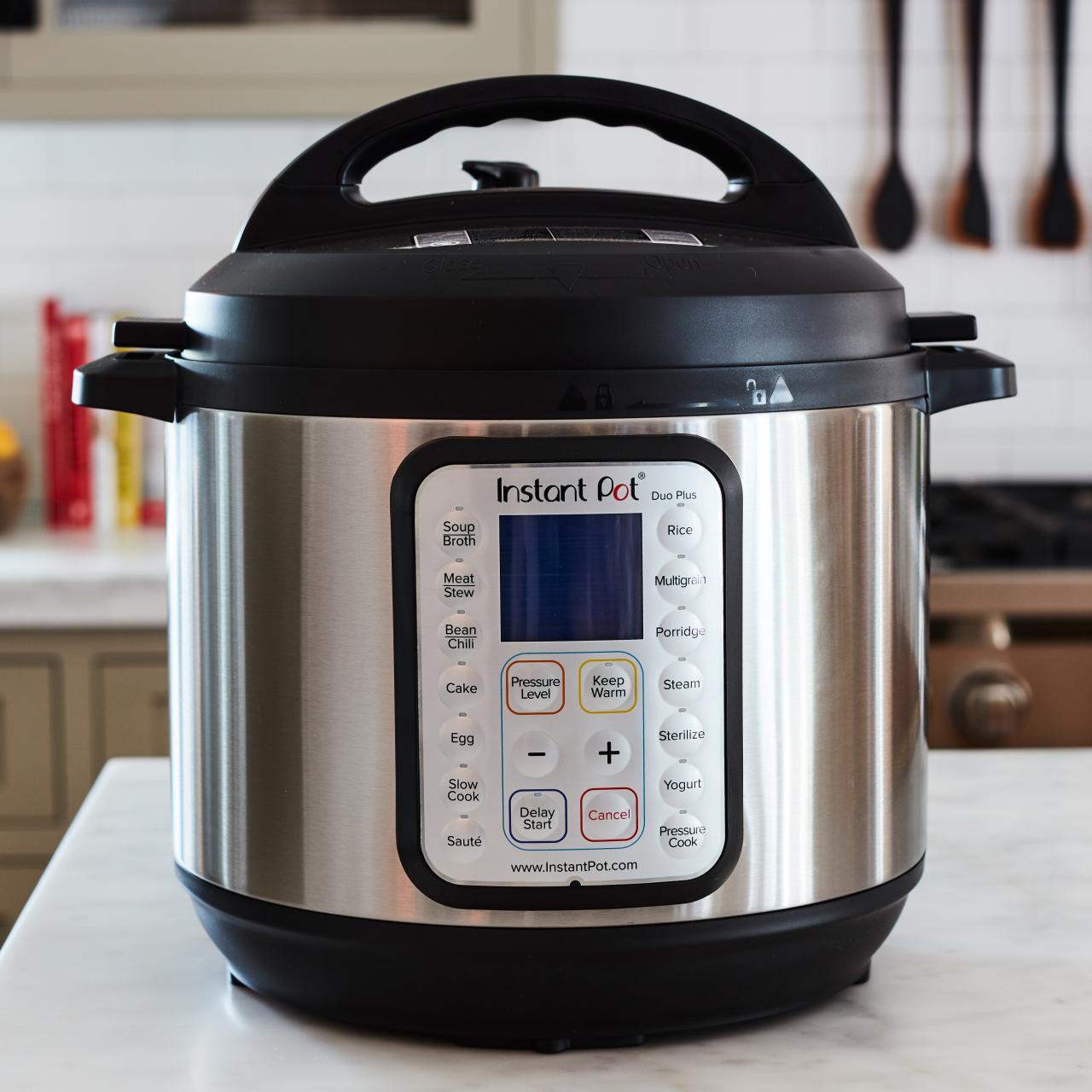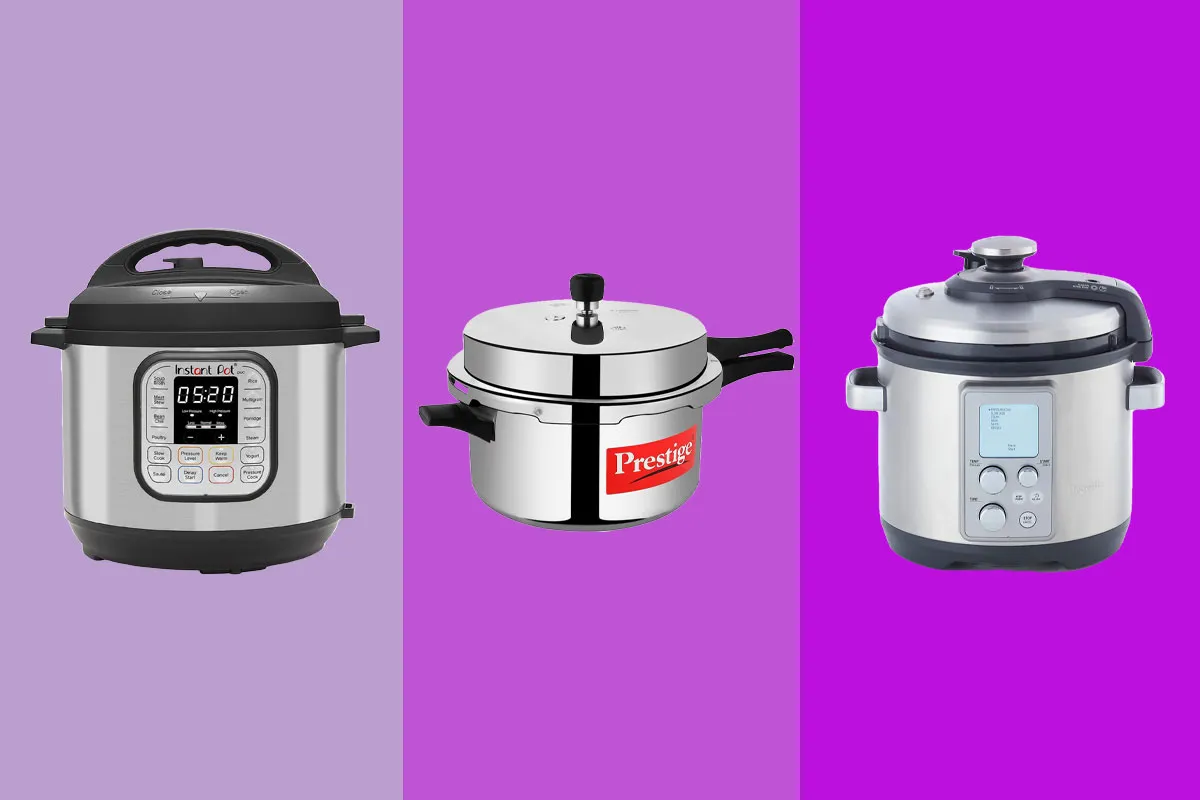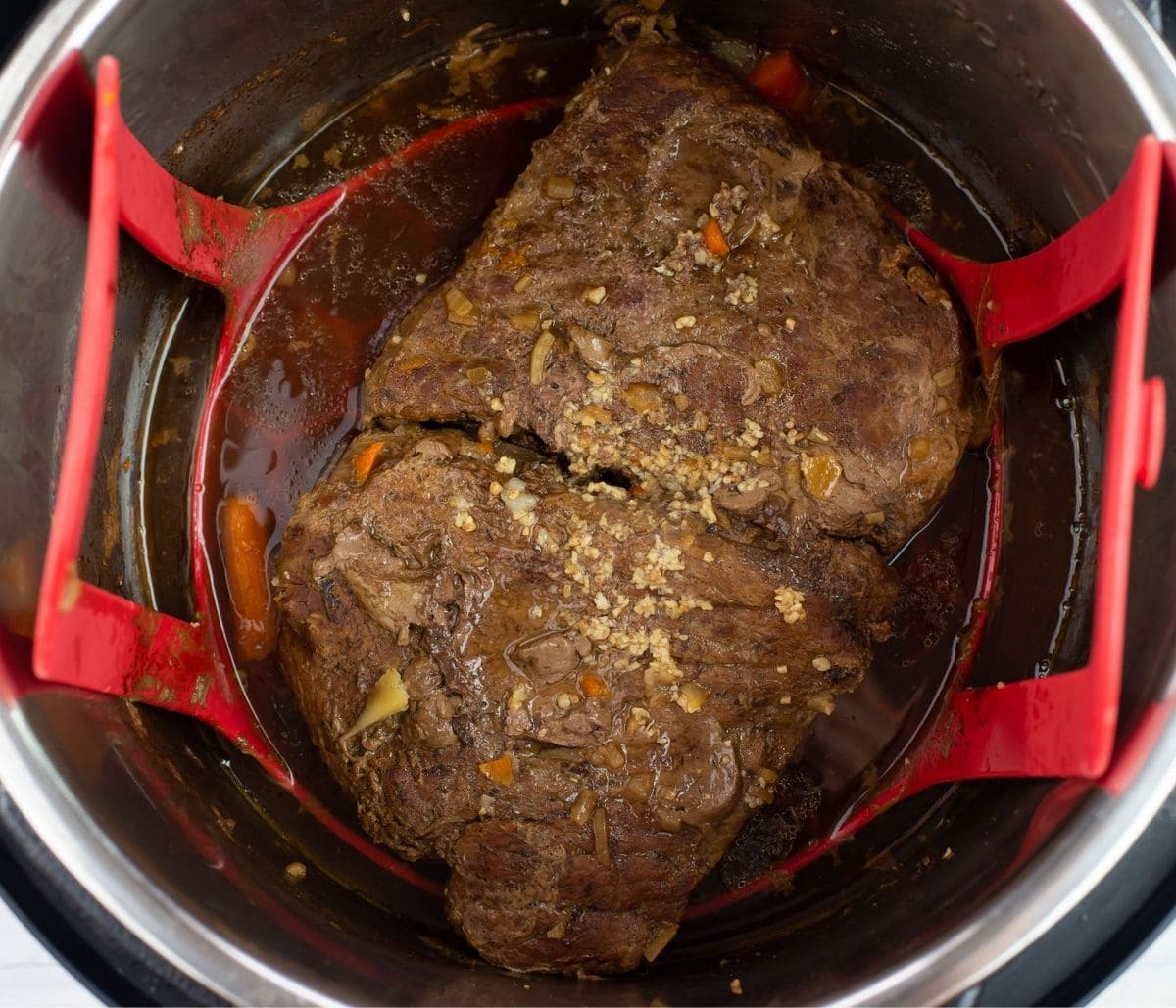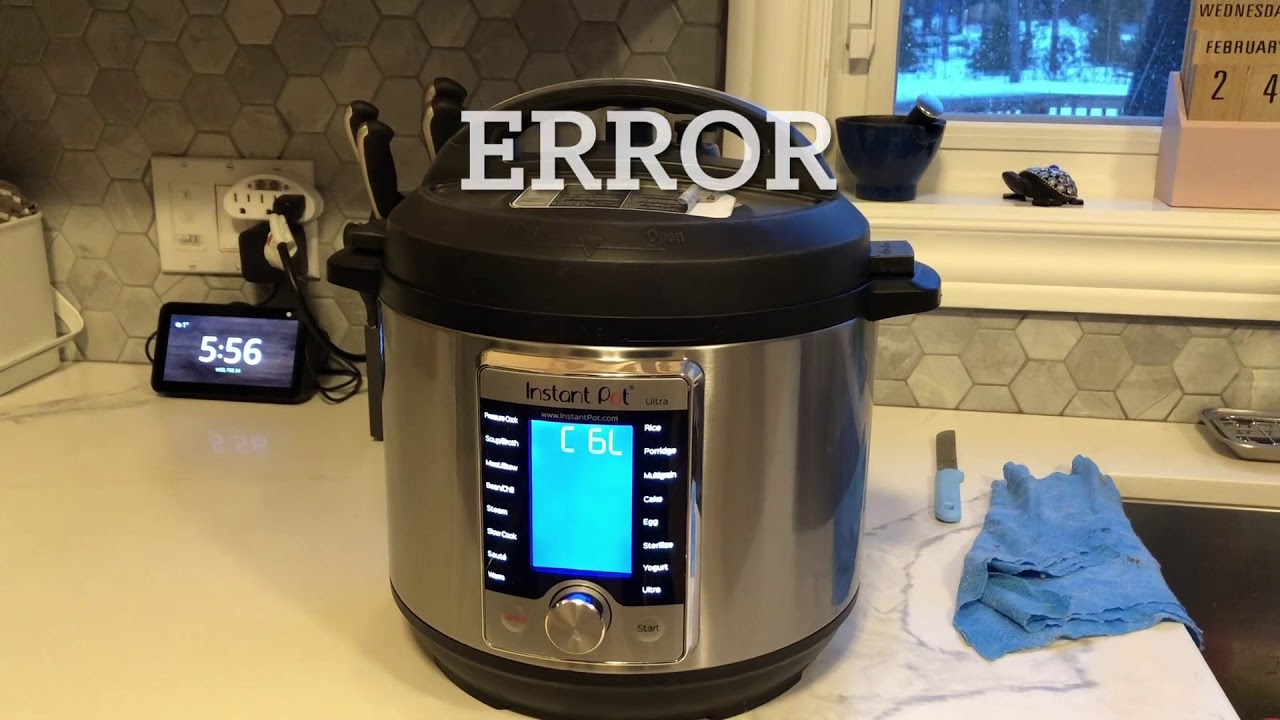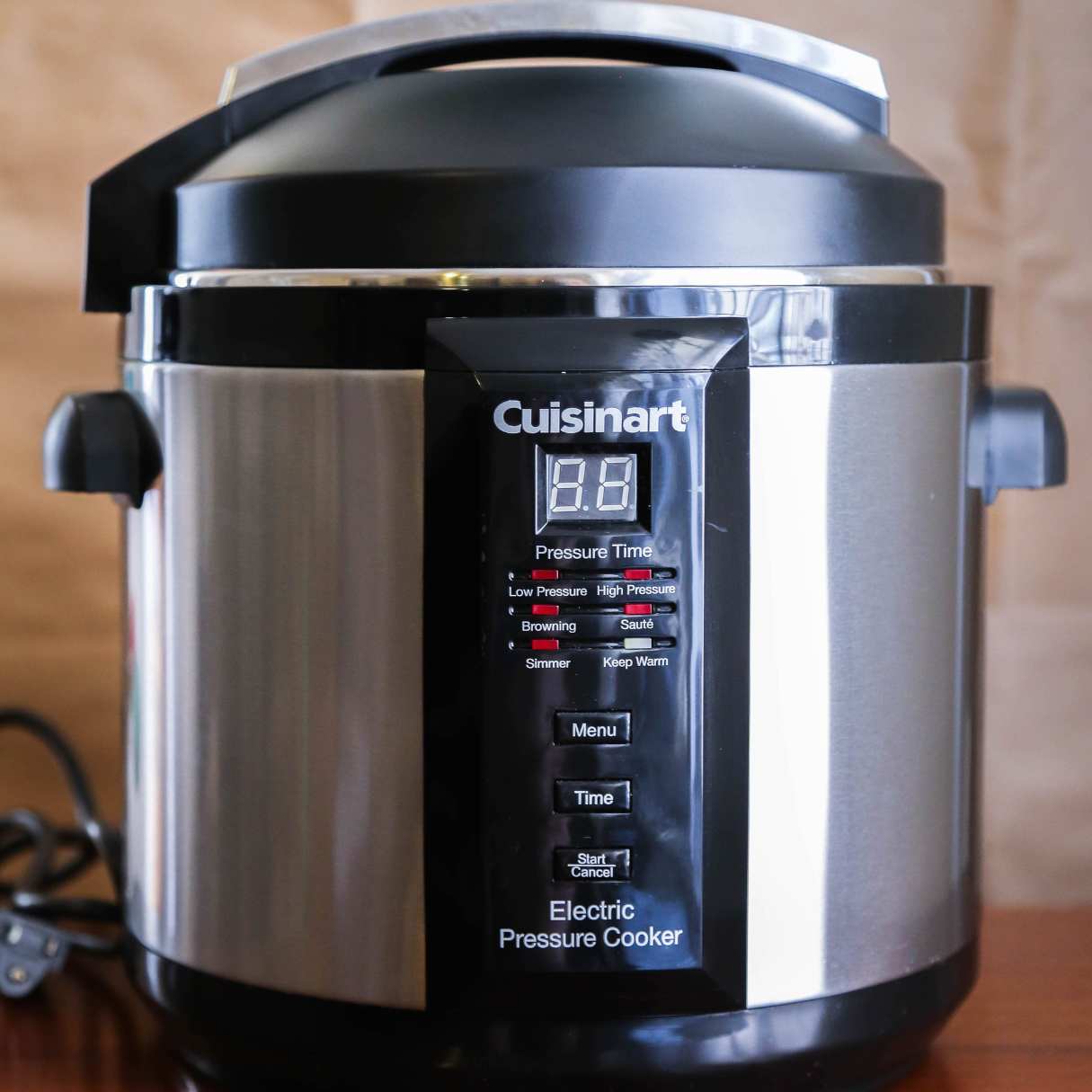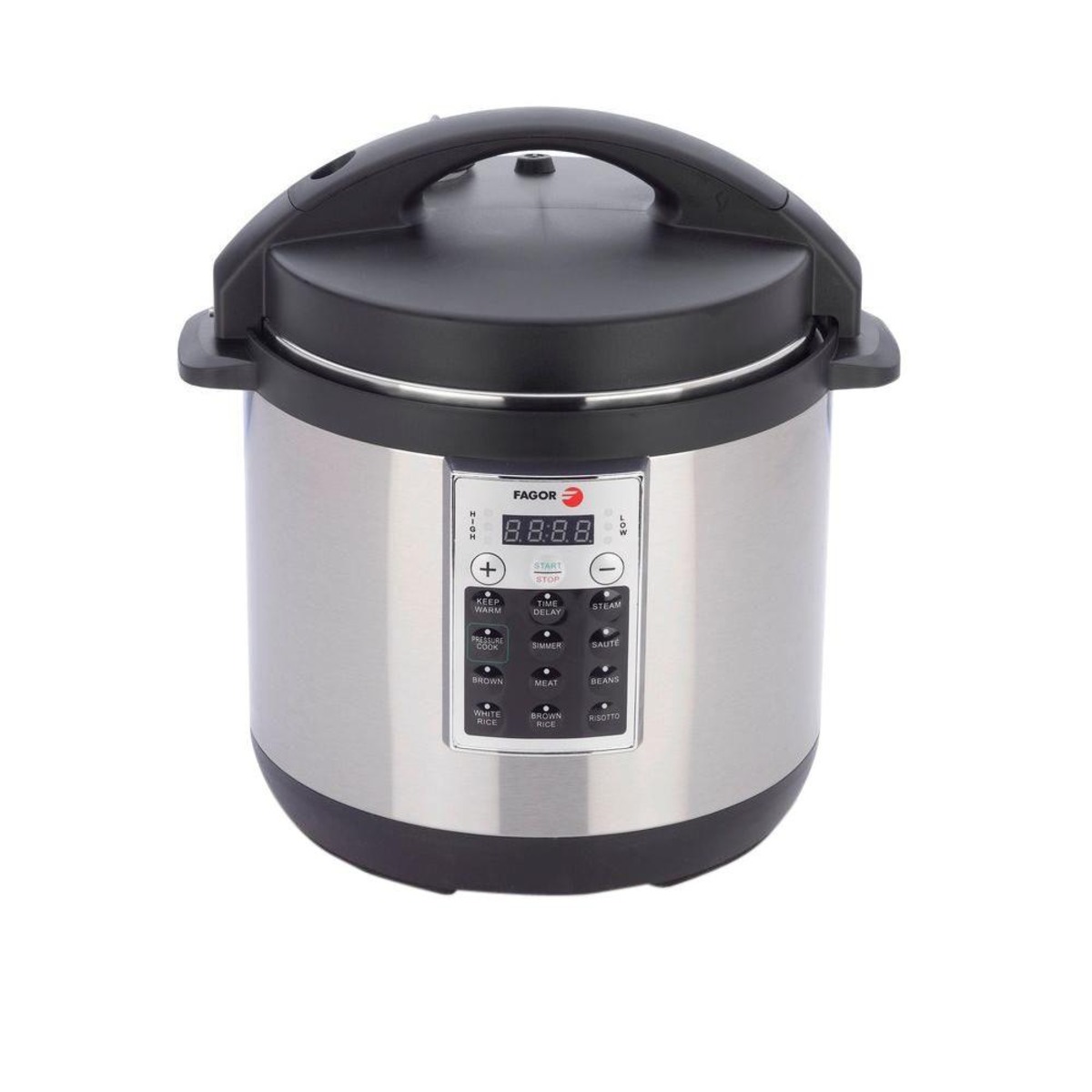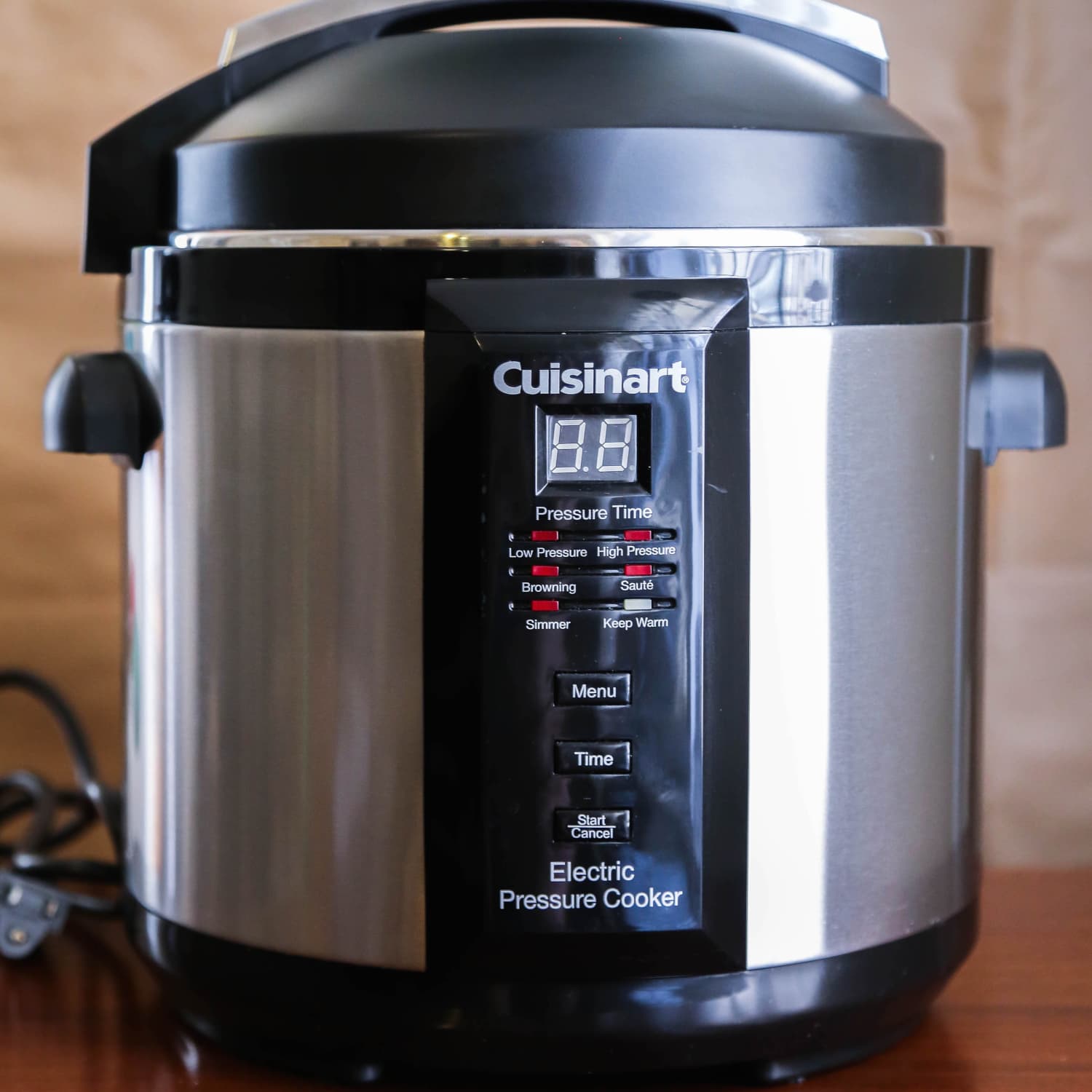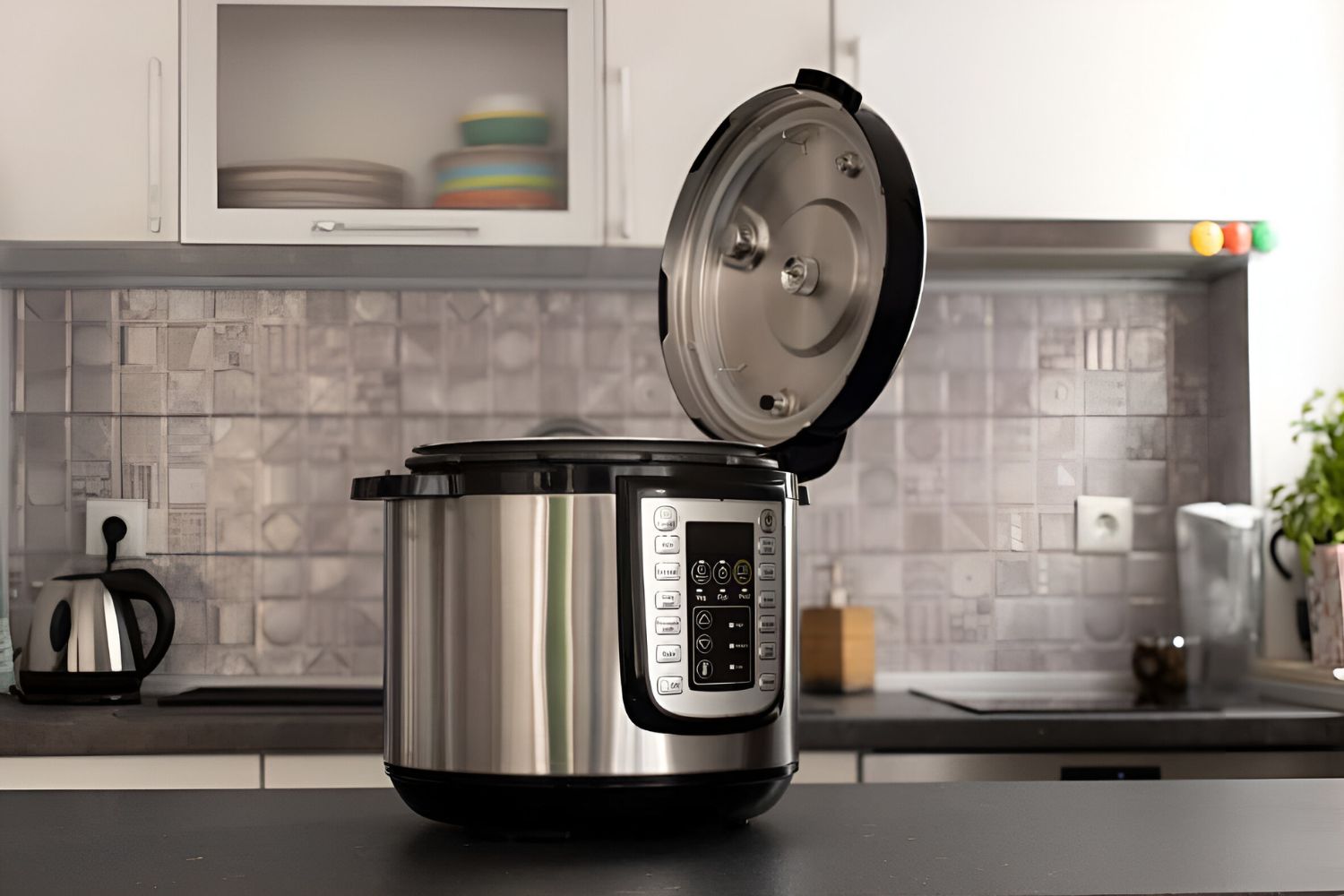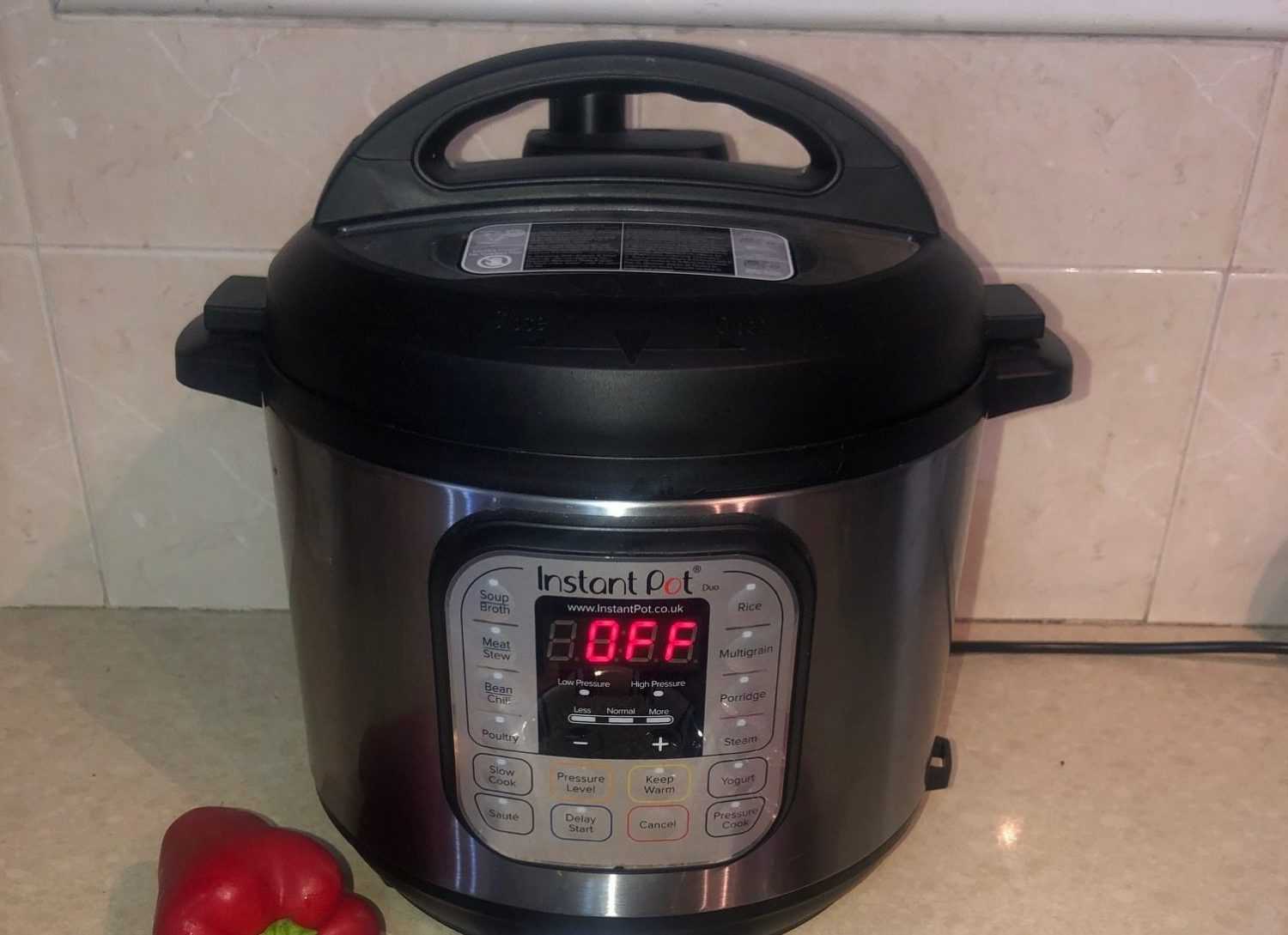Introduction
Welcome to our guide on how to fix common issues with electric pressure cookers. Electric pressure cookers are versatile kitchen appliances that can save you time and effort in the kitchen by quickly cooking a wide variety of dishes. However, like any other appliance, they can sometimes encounter problems that might hinder their performance.
In this article, we will discuss the most common issues that people face with their electric pressure cookers and provide you with troubleshooting steps to help resolve them. Whether your pressure cooker is not turning on, the display screen is not working properly, or you are experiencing problems with the lid sealing, we’ve got you covered.
Before diving into the troubleshooting steps, it’s essential to note that safety should always be your top priority. When working with any electrical appliance, make sure to follow proper safety precautions, such as unplugging the cooker before attempting any repairs or troubleshooting. If you are unsure about performing any steps, it is recommended to consult the user manual or contact the manufacturer for professional assistance.
Now, let’s get started and learn how to fix common issues that can occur with your electric pressure cooker. By following the troubleshooting steps outlined in this guide, you can save yourself the frustration of dealing with faulty equipment and get back to cooking delicious meals in no time.
Common Issues with Electric Pressure Cookers
Electric pressure cookers are reliable appliances that can simplify your cooking process. However, they are not immune to common issues that can arise from regular use. Understanding these issues will help you identify and address any problems that may occur with your electric pressure cooker. Here are some of the most common issues:
- Not Turning On: One of the most frustrating problems is when your electric pressure cooker doesn’t turn on. This could be due to a faulty power source, a malfunctioning power cord, or an issue with the cooker’s internal circuitry.
- Display Screen Not Working Properly: If you notice that the display screen on your electric pressure cooker is not functioning correctly, it could be due to a loose connection, a damaged display panel, or a software glitch.
- Lid Not Sealing: A proper seal is crucial for the functioning of an electric pressure cooker. If the lid fails to seal properly, it can lead to difficulty in building pressure and longer cooking times. Causes for this issue include a misaligned sealing ring, debris on the sealing surfaces, or a damaged lid gasket.
- Slow Cooking or Not Reaching Pressure: If your electric pressure cooker is taking longer than usual to cook or not reaching the desired pressure, it could be due to insufficient liquid, incorrect heat settings, or a malfunctioning pressure regulating valve.
- Pressure Release Valve Not Working: The pressure release valve is an essential safety feature in an electric pressure cooker. If you find that the valve is not functioning properly, it can be due to a blockage, a faulty spring, or a damaged valve mechanism.
- Overheating or Burning Food: An electric pressure cooker should not overheat or burn the food inside. If you experience this issue, it could be due to inadequate liquid, incorrect temperature settings, or a malfunctioning temperature sensor.
- Timer or Delay Start Not Functioning: Some electric pressure cookers offer timer or delay start features, allowing you to schedule the cooking time in advance. If these functions are not working as expected, it could be due to a software glitch or a fault in the control panel.
Now that we have identified the common issues that can occur with electric pressure cookers, let’s move on to the next section and explore the troubleshooting steps to resolve these problems.
Troubleshooting Steps
When faced with issues with your electric pressure cooker, it’s essential to follow a systematic troubleshooting approach to identify and resolve the problem. Here are some troubleshooting steps you can take for common issues:
- Not Turning On: Start by checking if the power cord is securely plugged in and the outlet is functioning correctly. If the power source is not the issue, try resetting the cooker by unplugging it for a few minutes before plugging it back in. If it still doesn’t turn on, there may be a problem with the internal circuitry that requires professional repair.
- Display Screen Not Working Properly: First, check if the connections between the display panel and the circuit board are secure. If the screen is still malfunctioning, try resetting the cooker or updating the firmware if applicable. If these steps don’t resolve the issue, contact the manufacturer for further assistance.
- Lid Not Sealing: Ensure that the sealing ring is properly aligned and free from any debris or damage. Clean the sealing surfaces thoroughly and make sure the lid is securely locked and positioned correctly. If the issue persists, check if the lid gasket is damaged and needs replacement. Contact the manufacturer for a replacement gasket if necessary.
- Slow Cooking or Not Reaching Pressure: Verify that you have added the recommended amount of liquid and that the heat settings are appropriate for the desired dish. Check if the pressure regulating valve is clean and functioning correctly. If the problem persists, refer to the user manual for specific troubleshooting instructions or contact the manufacturer for assistance.
- Pressure Release Valve Not Working: Inspect the pressure release valve for any obstructions and clean it thoroughly. Check if the spring inside the valve is functioning properly. If the valve is still not working, it may need to be replaced by contacting the manufacturer.
- Overheating or Burning Food: Double-check that you have added sufficient liquid to the cooker. Ensure that the temperature settings are appropriate for the dish you are preparing. If the problem continues, the temperature sensor may be faulty, and it is recommended to contact the manufacturer for professional assistance.
- Timer or Delay Start Not Functioning: Review the user manual to ensure that you are following the correct steps for setting the timer or delay start function. If the issue persists, try resetting the cooker or updating the firmware. Contact the manufacturer if further assistance is required.
Remember, if you are unsure about performing any troubleshooting steps or the issue persists after attempting these steps, it is recommended to consult the user manual or contact the manufacturer for professional assistance.
Not Turning On
One common issue with electric pressure cookers is when they fail to turn on. This can be a frustrating problem, but there are several troubleshooting steps you can take to address it:
- Check the power source: Ensure that the power cord is securely plugged into a functional electrical outlet. Try plugging another appliance into the same outlet to verify if it’s working properly. If the outlet is not the issue, move on to the next step.
- Inspect the power cord: Examine the power cord for any visible signs of damage such as cuts, fraying, or exposed wires. If you notice any damage, it is recommended to replace the cord with a new one from the manufacturer.
- Reset the cooker: Sometimes, a simple reset can resolve the problem. Unplug the cooker from the power source and wait for a few minutes. Then, plug it back in and try turning it on again.
- Check the circuit breaker: If the cooker is not turning on, it could be due to a tripped circuit breaker. Go to your electrical panel and check if the breaker that controls the outlet where the cooker is plugged in has been tripped. Reset the breaker if necessary.
- Internal circuitry issues: If none of the previous steps solve the problem, there could be a fault with the internal circuitry of the cooker. In this case, it is recommended to contact the manufacturer or a qualified technician for further assistance and repairs.
It is worth mentioning that safety should always be a priority when dealing with electrical appliances. Before attempting any repairs or troubleshooting steps, it is crucial to unplug the cooker to avoid the risk of electric shock. If you are unfamiliar with electrical systems or unsure about performing any steps, it is best to consult the user manual or seek professional help.
Display Screen Not Working Properly
Another common issue with electric pressure cookers is when the display screen is not functioning properly. If you’re experiencing this problem, follow these troubleshooting steps to address it:
- Check the connections: Ensure that the connections between the display panel and the circuit board are secure. Sometimes, a loose connection can cause the screen to malfunction. If you find any loose connections, carefully reattach them.
- Reset the cooker: Try resetting the cooker by unplugging it from the power source for a few minutes. Then, plug it back in and see if the display screen starts working again. This can help clear any temporary software glitches that may be affecting the screen.
- Update the firmware: Some electric pressure cookers have firmware that can be updated to resolve issues. Check the manufacturer’s website or the user manual for instructions on how to update the firmware. Follow the provided steps carefully to ensure a successful update.
- Inspect for physical damage: Examine the display panel for any visible physical damage, such as cracks or water damage. If you notice any damage, it may require professional repair or replacement. In this case, contact the manufacturer or a qualified technician for further assistance.
- Contact the manufacturer: If the display screen is still not functioning properly after attempting the previous steps, it is recommended to contact the manufacturer. They will have specialized knowledge and support to help you resolve the issue or provide guidance on next steps.
It’s important to note that tampering with the internal components of the cooker or attempting repairs without proper knowledge can void the warranty. Therefore, if you’re unsure about performing any troubleshooting steps or the issue persists, it’s best to consult the user manual or seek assistance from the manufacturer or a qualified technician.
Lid Not Sealing
One of the common issues that electric pressure cooker users face is a lid that is not sealing properly. A proper seal is crucial for the cooker to build pressure and function correctly. If you find that your pressure cooker’s lid is not sealing, follow these troubleshooting steps:
- Check the sealing ring: The sealing ring is a vital component that creates a tight seal between the lid and the pot. If the sealing ring is misaligned or damaged, it can prevent the lid from sealing properly. Remove the sealing ring and inspect it for any visible signs of damage or wear. If it’s damaged, replace it with a new one from the manufacturer.
- Clean the sealing surfaces: Sometimes, a buildup of food particles or debris can prevent the lid from creating a proper seal. Clean the sealing surfaces of both the lid and the pot thoroughly. Use a soft cloth or sponge and warm, soapy water to remove any residue. Rinse and dry the surfaces before attempting to seal the lid again.
- Ensure proper positioning: Make sure that the lid is properly aligned with the pot before attempting to close and seal it. Check if there are any obstructions or foreign objects that may hinder the sealing process. Adjust the lid until it aligns correctly with the pot, ensuring a secure seal.
- Check the lid gasket: Some electric pressure cookers have a separate gasket or a silicone ring on the inside of the lid. If your pressure cooker has this feature, inspect the gasket for damage or wear. A damaged gasket may prevent the lid from sealing properly. Contact the manufacturer for a replacement gasket if necessary.
- Apply gentle pressure: When closing the lid, apply gentle pressure and press down firmly to ensure a proper seal. Listen for a clicking sound indicating that the lid is securely locked in place. If you still have trouble sealing the lid, refer to the user manual for specific instructions or contact the manufacturer for assistance.
Always remember to prioritize safety and follow the user manual’s guidelines when troubleshooting issues with your electric pressure cooker. If the lid still does not seal properly after attempting these steps, it is best to contact the manufacturer or a qualified technician for further guidance and assistance.
Slow Cooking or Not Reaching Pressure
If your electric pressure cooker is taking longer than usual to cook or not reaching the desired pressure, it can be frustrating. This issue may occur due to several factors, but don’t worry, as there are troubleshooting steps you can take to address it:
- Ensure sufficient liquid: Verify that you have added the recommended amount of liquid to the cooker. Without enough liquid, the cooker may not generate enough steam to build pressure or cook the food properly. Refer to the recipe or the user manual for the minimum liquid requirements.
- Check heat settings: Double-check that you have selected the appropriate heat settings for the dish you are preparing. Different recipes may require different heat levels, such as high, medium, or low. Adjust the heat settings accordingly and monitor if the cooker reaches the desired pressure.
- Inspect the pressure regulating valve: The pressure regulating valve controls the release of steam and maintains the desired pressure inside the cooker. Clean the valve and ensure that it moves freely without any obstructions. If the valve is damaged or not functioning correctly, it may need to be replaced.
- Check the sealing ring and lid: A properly sealed lid is essential for the cooker to build and maintain pressure. Refer to the troubleshooting steps in the previous section to ensure that the sealing ring and lid are in good condition and sealing properly.
- Perform a pressure test: If you suspect that the cooker is not reaching the desired pressure, you can perform a pressure test. Fill the pot with water and set the cooker to a high-pressure cooking setting. Monitor the cooker to see if it reaches and maintains the desired pressure. If it doesn’t, there may be an issue with the cooker that requires further examination or repair.
- Consult the user manual or manufacturer: If the issue persists or if you are unsure about performing any troubleshooting steps, consult the user manual for specific troubleshooting instructions. You can also contact the manufacturer’s customer support for further assistance and guidance.
By following these troubleshooting steps, you can help resolve the issue of slow cooking or not reaching pressure with your electric pressure cooker. Remember to always prioritize safety and refer to the user manual for specific instructions related to your cooker model.
Pressure Release Valve Not Working
The pressure release valve is an integral safety feature in electric pressure cookers. If you find that the pressure release valve is not functioning properly, it’s essential to address the issue as soon as possible. Here are some troubleshooting steps you can take:
- Inspect for blockages: The pressure release valve can become clogged with food particles or other debris, preventing it from releasing steam as intended. Carefully inspect the valve and clean it thoroughly with a small brush or a toothpick to remove any obstructions.
- Check the spring: The pressure release valve operates with the help of a spring mechanism. Ensure that the spring is intact and functioning correctly. If the spring is damaged or missing, it may be necessary to replace the pressure release valve entirely.
- Test the valve: To check if the pressure release valve is working, perform the water test. Fill the cooker with water up to the recommended level and set it to cook. As the pressure builds up, observe if the steam is released through the valve. If the valve is not releasing steam or if it’s continuously releasing steam, there may be an issue with the valve that requires attention.
- Perform a safety check: Electric pressure cookers often have additional safety features such as a locking system that prevents the lid from being opened when pressure is present. Ensure that these safety mechanisms are working correctly. If the lid can be easily opened, even when pressure is present, it may indicate a problem with the pressure release valve or other safety features.
- Consult the user manual or manufacturer: For specific troubleshooting instructions related to your pressure cooker model, consult the user manual. If the issue persists or if you are unsure about performing any steps, it’s best to contact the manufacturer’s customer support for assistance and professional guidance.
Remember, the pressure release valve is a critical component for the safe operation of an electric pressure cooker. If you encounter any issues with the pressure release valve or suspect that it is not functioning properly, it’s important to address the issue promptly to prevent any safety hazards.
Overheating or Burning Food
If you find that your electric pressure cooker is overheating or burning the food inside, it can be concerning and frustrating. Several factors can contribute to this issue, but here are some troubleshooting steps to help resolve it:
- Ensure sufficient liquid: Check that you’ve added the recommended amount of liquid to the cooker. Insufficient liquid can cause the food to burn or overheat. Follow the recipe or the manufacturer’s guidelines for the minimum liquid requirement.
- Check temperature settings: Verify that you’ve selected the appropriate temperature settings for the specific dish you’re cooking. Different recipes may require different heat levels, such as high, medium, or low. Adjust the temperature settings accordingly to prevent overheating.
- Inspect the temperature sensor: The temperature sensor in the pressure cooker ensures accurate heat regulation. If the sensor is malfunctioning or inaccurate, it can result in overheating or burning of food. Contact the manufacturer for guidance on inspecting or replacing the temperature sensor, if needed.
- Adjust cooking times: If you consistently experience overheating or burning, try reducing the cooking time for your recipes. Shortening the cooking time can help prevent excessive heat buildup and avoid burning.
- Check for software updates: Some electric pressure cookers have firmware or software that can be updated. Check the manufacturer’s website or the user manual for instructions on how to update the firmware. It’s possible that a software glitch may be causing the overheating issue, and a firmware update can help resolve it.
- Inspect the pressure release valve: A faulty pressure release valve can allow too much pressure to build up inside the cooker, leading to overheating. Follow the troubleshooting steps mentioned in section 5 to ensure the pressure release valve is functioning correctly.
- Consult the user manual or manufacturer: If the issue persists or if you’re unsure about performing any troubleshooting steps, consult the user manual for specific instructions related to your cooker. You can also reach out to the manufacturer’s customer support for further assistance and guidance.
Overheating or burning food in an electric pressure cooker can be a safety concern, as well as affecting the taste and quality of your dishes. It’s essential to address this issue promptly and take the necessary steps to prevent any further damage or unsafe cooking conditions.
Timer or Delay Start Not Functioning
If you’re experiencing issues with the timer or delay start function of your electric pressure cooker, it can be frustrating, especially if that feature is important to your cooking routine. Luckily, there are troubleshooting steps you can take to address this problem:
- Review the user manual: Start by reviewing the user manual for instructions on how to properly set the timer or delay start function. Ensure that you are following the correct steps and using the right buttons or settings on the control panel.
- Reset the cooker: Try resetting the cooker by removing the plug from the power source and waiting for a few minutes before plugging it back in. This can help clear any temporary glitches that may be affecting the timer or delay start function.
- Update the firmware: Check if there are any available firmware updates for your electric pressure cooker. Updating the firmware can often resolve software-related issues and restore the proper functioning of the timer or delay start function. Follow the manufacturer’s instructions for updating the firmware.
- Ensure correct time and date settings: Make sure that the time and date settings on your electric pressure cooker are accurate. Incorrect time or date settings can interfere with the proper functioning of the timer or delay start feature. Adjust the settings if necessary.
- Check for conflicting programming: Some electric pressure cookers may not allow certain functions, such as the timer or delay start, to be activated if other settings or cooking modes are selected. Ensure that there are no conflicting programming settings that prevent the timer or delay start function from working correctly.
- Perform a factory reset: If all else fails, you can try performing a factory reset on your electric pressure cooker. This will restore the device to its original settings and may help resolve any software-related issues affecting the timer or delay start function. Refer to the user manual for instructions on how to perform a factory reset.
- Contact the manufacturer: If the timer or delay start function is still not functioning after attempting the troubleshooting steps, it is best to contact the manufacturer’s customer support for further assistance. They can provide specific guidance based on the model and help resolve the issue.
Remember to always consult the user manual and follow the manufacturer’s instructions when troubleshooting issues with your electric pressure cooker. They will have the most accurate and model-specific guidance to help you resolve any problems with the timer or delay start function.
Conclusion
Electric pressure cookers are fantastic kitchen appliances that can greatly simplify and speed up your cooking process. However, encountering issues with these appliances is not uncommon. In this guide, we have discussed some of the most common problems that users face with electric pressure cookers and provided troubleshooting steps to help you resolve these issues.
From not turning on to problems with the display screen, lid sealing, slow cooking, pressure release valve, overheating, and timer or delay start function, we have covered a range of issues that can arise. By following the troubleshooting steps outlined in this guide, you can increase your chances of resolving these problems successfully.
It is important to prioritize your safety when troubleshooting electric pressure cookers. Always ensure that the cooker is unplugged before attempting any repairs or troubleshooting steps. If you are uncertain or uncomfortable with any of the steps, refer to the user manual or contact the manufacturer for professional assistance.
We hope that this guide has been helpful in addressing the common issues you may encounter with your electric pressure cooker. By understanding these problems and knowing how to troubleshoot them, you can minimize frustration, ensure optimal performance, and continue enjoying the convenience of your electric pressure cooker in the kitchen.







